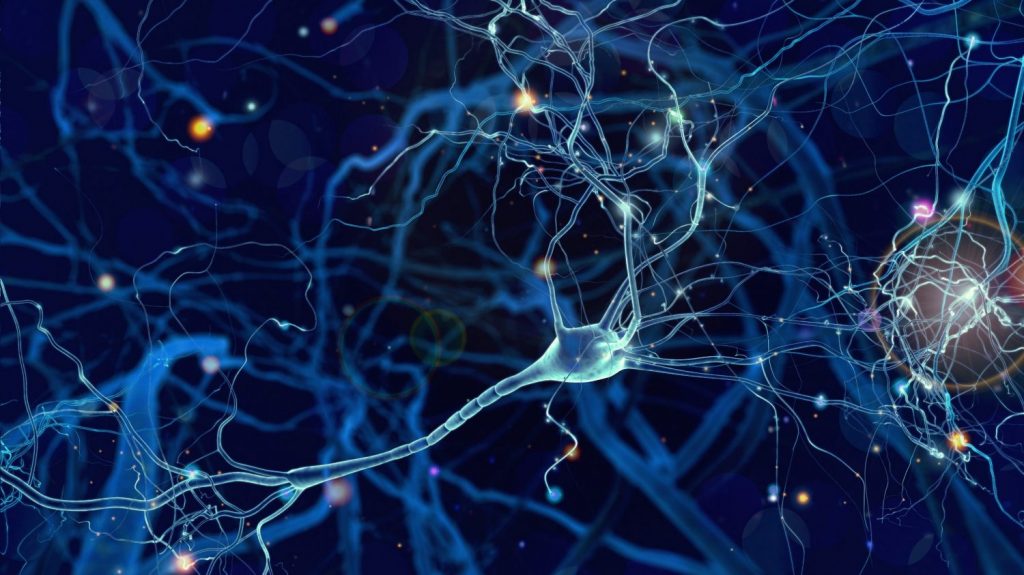Researchers have developed a brain-like device that is able to learn by association. Much like how famous psychologist Ivan Pavlov adapted dogs to associate the sound of a bell with food, scientists at Northwestern and Hong Kong universities have adapted their circuits to relate light and pressure.
Their results were published in Nature Communications.
The secret of the device lies in the new organic and electrochemical “synaptic transistors” that process and store information like the human brain. Researchers have shown that this transistor can simulate both short and long term plasticity of synapses in the human brain, drawing on memories to learn over time.
Thanks to its brain-like ability, this new transistor and electronic circuit can push the limits of traditional computers, including their energy-intensive devices, and their limited ability to multitask. This brain-like device is more resistant to breakage and trouble, and thus can continue to function effectively even when some of its components are not active.
“Although the modern computer is amazing, the human brain can easily overpower it to solve complex and unstructured tasks, such as pattern recognition, motor control, and multisensory integration,” says Jonathan Rivnay, one of the study’s lead authors. This is due to the flexibility of synapses, which are the building blocks of the brain’s computing power. These synapses allow the brain to function in a highly parallel, problem-resistant, and energy-efficient manner. As part of our work, we demonstrate the work of an organic and plastic transistor that duplicates the main functions of a biological synapse. “
Traditional Computing and Its Problems
Traditional computers have separate computing and storage units, so tasks that require large amounts of information consume a great deal of energy. Inspired by the common computational and storage capacity of the human brain, researchers have over the years wanted to design computers that function more like what is between two ears, with devices similar to neural networks.
Currently, the memory resistor, the “memristor”, is the most advanced technology for combining computation and storage. But it remains energy-intensive and provides less biocompatibility. These drawbacks have prompted scientists to consider the synaptic transistor, in particular the organic and electrochemical synaptic transistor, which operates at a low voltage, can rely on ever-changing memory, and is widely compatible with biological use. However, some pitfalls have yet to be avoided.
“Even organic and electrochemical entangled transistors that perform particularly well need to separate the storage operations from those of data reading,” says Rivnay. “So, if you want to preserve ‘memories,’ you have to separate them from the backup process, which may further complicate integration into circuits or systems.”
Turn on the crosslink transistor
To achieve their goal, the Northwestern and Hong Kong team have improved a plastic material that conducts electricity inside an interlocking and electrochemical transistor that can store ions. In the brain, a synapse is a structure through which one neuron can transmit signals to another nerve cell, using small molecules called neurotransmitters.
In a synaptic transistor, ions behave similarly to neurotransmitters, sending signals between terminals to form artificial synapses. By holding data stored in captive ions, the transistor remembers ancient activities and thus develops long-term elasticity.
The researchers demonstrated the synaptic behavior of their device by connecting synaptic transistors inside a neural circuit designed to simulate associative learning. They integrated pressure and light sensors into a circuit, and trained the circuit to connect these two physical “inputs” that were not related to each other.
After the first cycle of training, the circuit established an association between light and pressure. After five turns, the circuit bonded the light largely to the pressure. Light alone can trigger a signal, an “unconditioned” response.
Futures applications
Because the synaptic circuit is made of flexible polymers, such as plastic, it can be fabricated on flexible panels and integrated relatively easily into portable electronic devices, small robots, and devices that can be implanted in or under the body. Devices that would be connected directly to living tissues, and even to the brain.
“If our application is evidence that this concept can work, our circuit idea can be further developed to include more sensory input and integrated with other electronic devices to enable energy-efficient computer computations,” Rivnay says.
Subscribe to the newsletter!
Pieuvre.ca support
Other contents:

“Hardcore beer fanatic. Falls down a lot. Professional coffee fan. Music ninja.”

![[IMAGES] Someone tries to set himself on fire outside Trump's courthouse](https://m1.quebecormedia.com/emp/emp/Capture_d_cran_2024_04_19_134909afe99a84-cf29-4f06-9dc2-9eb9ce265b46_ORIGINAL.jpg?impolicy=crop-resize&x=0&y=201&w=1074&h=604&width=1200)





More Stories
Pregnant female snow leopard at the Toronto Zoo
When the sun rises Radio-Canada.ca
Parhelia – auditory canal